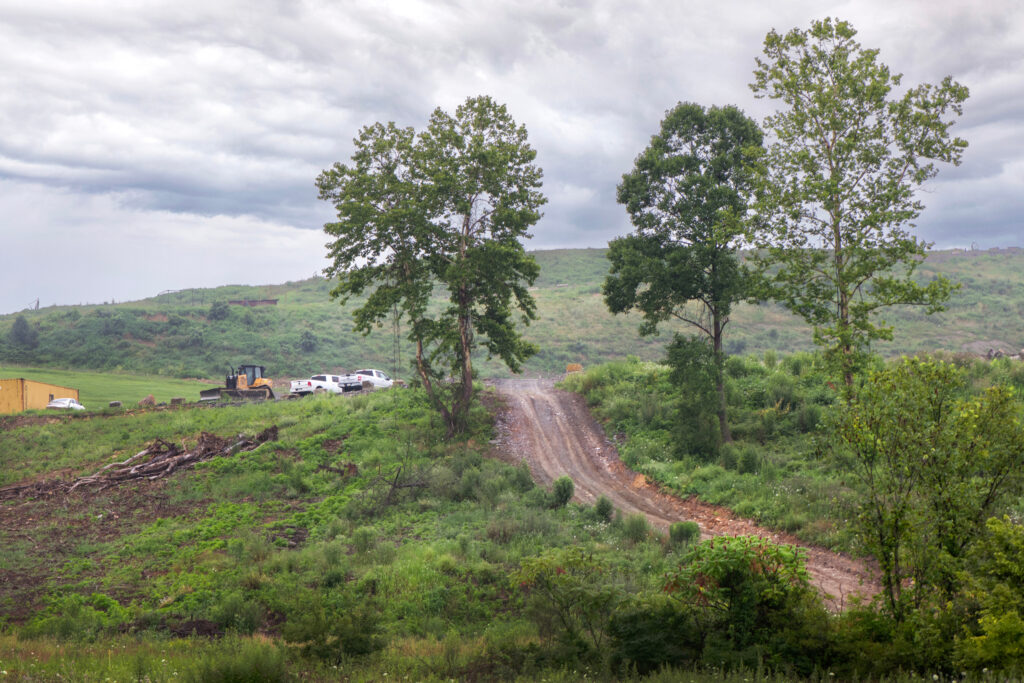Duke Energy is proposing a three-year extension for the Gibson power plant in southwest Indiana, the second-largest coal-fired power plant in the country.
Gibson, originally scheduled to close in 2035, would remain open until 2038 and would get a retrofit to be able to run on natural gas or coal, according to a plan the utility released this week.
Duke said the proposal, if adopted by state regulators, will give it the resources and flexibility needed to handle a projected increase in electricity demand. At the same time, environmental advocates said the plan reflects an overreliance on fossil fuels and is a retreat from what they already saw as a weak approach to reducing emissions.
The dynamics in Indiana are similar to other states as the growth of data centers and regulatory backlogs in building renewable energy are making utilities more cautious about closing fossil fuel power plants.
Explore the latest news about what’s at stake for the climate during this election season.
But Indiana is a special case for a few reasons, including its history of coal mining and its heavy use of coal for producing electricity. The state ranks fourth in the country in electricity generation from coal, behind Texas, West Virginia and Kentucky, according to the Energy Information Administration.
Just a few years ago, Indiana was notable for taking steps away from coal. One of its utilities, NIPSCO, got national attention for its plan to close all its coal plants by 2028. Three years ago, the utility AEP said it would close the Rockport coal plant, the second-largest in Indiana and among the 10 largest in the country, by 2028.
The new Duke plan, which covers its Indiana power plants through 2044, is likely to add to concerns that Indiana utilities are backsliding on the progress they seemed to be making.
“These utility commitments are not really commitments,” said Ben Inskeep, program director for Citizens Action Coalition, a consumer and environmental advocacy group based in Indianapolis. “When the utility says they’re doing X by Y year, you know, if there’s no law forcing them to do so, they can change those plans on a dime.”
Indiana law requires electricity utilities to issue long-term plans for power plants every three years. Regulators will review the filing, take testimony from interested parties and then issue comments.
Nathan Gagnon, Duke’s managing director for Midwest resource planning, explained the proposal during an hours-long video meeting with interested parties. He spoke about a summary of the plan, with a more detailed filing to come in November.
“Coal drops off pretty steeply,” he said about the later years under the proposal. “There’s not much coal in the mix after ‘31 when you get down to it.”
He fielded questions from viewers, including members of the public, who had concerns about climate change and also wanted the company to explore developing new nuclear plants.
His answers highlighted that it takes years to implement big changes to electricity resources and that the company is looking for scenarios that have low costs while still meeting customers’ needs and following federal emissions rules.
Duke, based in North Carolina, is one of the country’s largest utilities, with customers in the Carolinas, Florida, Indiana, Kentucky and Ohio.
It is proposing various changes to the five generating units at Gibson, which together have a summer generating capacity of 3,132 megawatts. Southern Co.’s Plant Bowen in Georgia, with capacity of 3,200 megawatts, is the only coal-fired plant that’s larger.
Under Duke’s preferred planning scenario, Gibson units 1 and 2 would be retrofitted by 2030 to be able to burn both coal and natural gas. Units 3 and 4 would be replaced by natural gas generating units by that same year and have no timetable for closing. Unit 5 would close by 2030.
Duke also is proposing to convert the Cayuga and Edwardsport coal plants to run on natural gas. (Edwardsport is unlike the other coal plants in that it uses a “coal gasification” technology that Duke once promoted as highly efficient, and now would be replaced by a less expensive process.)
Duke’s plan includes several gigawatts of new wind and solar, but most of this is in the last few years of the timeline.
The slow rollout of renewables is a detail that jumped out to Brendan Pierpont, director of electricity modeling for the think tank Energy Innovation. He said Duke’s modeling of future costs of renewables look high to him, and creates a distorted picture.
“That’s a clear place where they have put their thumb on the scales,” he said.
He said Duke’s lack of near-term progress on renewables detracts from the company’s credibility when it talks about reducing emissions.
Duke issued this statement along with the plan:
“Duke Energy’s carbon emissions reduction goals remain unchanged, but our progress will not be linear as we retire coal and bring new generation resources online. Over time our diverse energy mix will enable us to reach our 2050 net-zero carbon emission ambitions.”
About This Story
Perhaps you noticed: This story, like all the news we publish, is free to read. That’s because Inside Climate News is a 501c3 nonprofit organization. We do not charge a subscription fee, lock our news behind a paywall, or clutter our website with ads. We make our news on climate and the environment freely available to you and anyone who wants it.
That’s not all. We also share our news for free with scores of other media organizations around the country. Many of them can’t afford to do environmental journalism of their own. We’ve built bureaus from coast to coast to report local stories, collaborate with local newsrooms and co-publish articles so that this vital work is shared as widely as possible.
Two of us launched ICN in 2007. Six years later we earned a Pulitzer Prize for National Reporting, and now we run the oldest and largest dedicated climate newsroom in the nation. We tell the story in all its complexity. We hold polluters accountable. We expose environmental injustice. We debunk misinformation. We scrutinize solutions and inspire action.
Donations from readers like you fund every aspect of what we do. If you don’t already, will you support our ongoing work, our reporting on the biggest crisis facing our planet, and help us reach even more readers in more places?
Please take a moment to make a tax-deductible donation. Every one of them makes a difference.
Thank you,


















